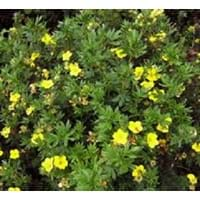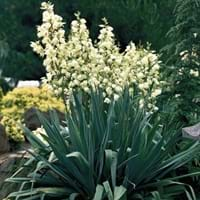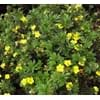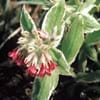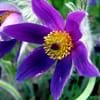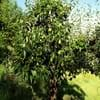Life Span
Perennial
Perennial
Type
Perennial
Flowering Plants, Succulent
Origin
Not Available
Southeastern United States
Types
Abbottswood Potentilla
Day Dawn Potentilla
Goldfinger Potentilla
Pink Beauty Potentilla
Snowbird Potentilla
Golden Sword, Ivory Tower, Color Guard
Number of Varieties
Not Available
Habitat
gardens, Grassland, Homesteads, Open areas
Dry areas, Hot climate regions
USDA Hardiness Zone
3-8
4-10
AHS Heat Zone
10-1
Not Available
Sunset Zone
A1, A2, A3, H1, H2, 1a, 1b, 2a, 2b, 3a, 3b, 4, 5, 6, 7, 8, 9, 10, 11, 12, 13, 14, 15, 16, 17, 18, 19, 20, 21, 22, 23, 24
Not Available
Habit
Not Available
Clump-Forming
Minimum Height
Not Available
Minimum Width
Not Available
Flower Color
Not Available
White
Flower Color Modifier
Not Available
Bicolor
Fruit Color
Not Available
Not Available
Leaf Color in Spring
Not Available
Green
Leaf Color in Summer
Not Available
Green
Leaf Color in Fall
Not Available
Green, Several shades of Green
Leaf Color in Winter
Light Green
Green
Leaf Shape
Tiny
Long Linear
Plant Season
Not Available
Spring
Sunlight
Full Sun, Partial Sun
Full Sun, Partial Sun
Growth Rate
Not Available
Slow
Type of Soil
Not Available
Loam, Sand
The pH of Soil
Not Available
Neutral, Slightly Acidic, Slightly Alkaline
Soil Drainage
Not Available
Well drained
Bloom Time
Summer, Late Summer, Early Fall
Early Summer, Late Summer, Summer
Repeat Bloomer
Not Available
Yes
Tolerances
Drought
Drought
Where to Plant?
Ground, Pot
Container, Ground
How to Plant?
Stem Planting
Seedlings
Plant Maintenance
Medium
Medium
Watering Requirements
Water Deeply, Water when soil is dry
Do not let dry out between waterings
In Summer
Lots of watering
Lots of watering
In Spring
Moderate
Moderate
In Winter
Average Water
Average Water
Soil pH
Not Available
Not Available
Soil Type
Not Available
Not Available
Soil Drainage Capacity
Not Available
Well drained
Sun Exposure
Full Sun, Partial Sun
Full Sun, Partial Sun
Pruning
Prune if you want to improve plant shape, Prune in winter, Prune to control growth, Remove damaged leaves, Remove deadheads, Requires little pruning
Prune if you want to improve plant shape, Remove damaged leaves, Remove dead or diseased plant parts
Fertilizers
All-Purpose Liquid Fertilizer
All-Purpose Liquid Fertilizer, Do not let fertilizers touch the leaves, Less fertilizing
Pests and Diseases
Red blotch
Bacterial Blight, Botrytis Blight, Leaf spot
Plant Tolerance
Drought
Drought
Flowers
Not Available
Yes
Flower Petal Number
Not Available
Single, Double
Showy Fruit
Not Available
No
Edible Fruit
Not Available
No
Fragrant Flower
Not Available
Yes
Fragrant Fruit
Not Available
No
Fragrant Leaf
Not Available
No
Fragrant Bark/Stem
Not Available
No
Showy Foliage
Not Available
Yes
Showy Bark
Not Available
Yes
Foliage Texture
Not Available
Fine
Foliage Sheen
Not Available
Glossy
Invasive
Not Available
No
Self-Sowing
Not Available
No
Attracts
Not Available
Birds, Butterflies, Flies
Allergy
Not Available
Not Available
Aesthetic Uses
Showy Purposes
Showy Purposes
Beauty Benefits
Not Available
Not Available
Environmental Uses
Air purification
Air purification
Medicinal Uses
Curing infectious diseases, Improve heart health, Lung Problems, Treatment of ulcers
Not Available
Part of Plant Used
Not Available
Flowers, Root
Other Uses
Showy Purposes
Decoration Purposes
Used As Indoor Plant
Yes
No
Used As Outdoor Plant
Yes
Yes
Garden Design
Not Available
Container, Cottage garden
Botanical Name
POTENTILLA cinerea
Yucca filamentosa
Common Name
Abbotswood Potentilla
Adam's needle, common yucca, Spanish bayonet, bear-grass, needle-palm, silk-grass, and spoon-leaf yucca
In Hindi
Potentilla Abbotswood
Adam's needle
In German
Abbotswood potentilla
Fädige Palmlilie
In French
Abbotswood potentille
Yucca filamentosa
In Spanish
Abbotswood Potentilla
Yucca filamentosa
In Greek
Abbotswood Potentilla
Adam's Needle
In Portuguese
Abbotswood Potentilla
Adam's Needle
In Polish
Abbotswood Potentilla
Jukka karolińska
In Latin
Abbotswood Potentilla
Adam's Needle
Phylum
Not Available
Magnoliophyta
Class
Not Available
Liliopsida
Family
Rosaceae
Agavaceae
Clade
Angiosperms, Eudicots, Rosids
Angiosperms, Monocots
Tribe
Not Available
Not Available
Subfamily
Rosoideae
Agavoideae
Number of Species
Not Available
Season and Care of Abbotswood Potentilla and Adam's Needle
Season and care of Abbotswood Potentilla and Adam's Needle is important to know. While considering everything about Abbotswood Potentilla and Adam's Needle Care, growing season is an essential factor. Abbotswood Potentilla season is Not Available and Adam's Needle season is Not Available. The type of soil for Abbotswood Potentilla is Not Available and for Adam's Needle is Loam, Sand while the PH of soil for Abbotswood Potentilla is Not Available and for Adam's Needle is Neutral, Slightly Acidic, Slightly Alkaline.
Abbotswood Potentilla and Adam's Needle Physical Information
Abbotswood Potentilla and Adam's Needle physical information is very important for comparison. Abbotswood Potentilla height is Not Available and width Not Available whereas Adam's Needle height is 45.00 cm and width 60.00 cm. The color specification of Abbotswood Potentilla and Adam's Needle are as follows:
Abbotswood Potentilla flower color: Not Available
Abbotswood Potentilla leaf color: Not Available
Adam's Needle flower color: White
- Adam's Needle leaf color: Green
Care of Abbotswood Potentilla and Adam's Needle
Care of Abbotswood Potentilla and Adam's Needle include pruning, fertilizers, watering etc. Abbotswood Potentilla pruning is done Prune if you want to improve plant shape, Prune in winter, Prune to control growth, Remove damaged leaves, Remove deadheads and Requires little pruning and Adam's Needle pruning is done Prune if you want to improve plant shape, Remove damaged leaves and Remove dead or diseased plant parts. In summer Abbotswood Potentilla needs Lots of watering and in winter, it needs Average Water. Whereas, in summer Adam's Needle needs Lots of watering and in winter, it needs Average Water.
